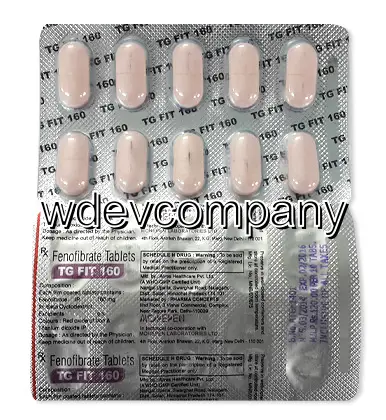| Package | Dosage | Price | Price per Dose | |
|---|---|---|---|---|
| Dosage: 160mg | ||||
| 360 pill | 160mg | $809.96 | $2.25 | |
| 180 pill | 160mg | $419.91 | $2.34 | |
| 120 pill | 160mg | $286.37 | $2.39 | |
| 90 pill | 160mg | $226.64 | $2.51 | |
| 60 pill | 160mg | $158.11 | $2.64 | |
| 30 pill | 160mg | $84.32 | $2.81 | |
| Dosage: 200mg | ||||
| 360 pill | 200mg | $1,106.89 | $3.07 | |
| 180 pill | 200mg | $576.28 | $3.20 | |
| 120 pill | 200mg | $391.79 | $3.27 | |
| 90 pill | 200mg | $309.21 | $3.43 | |
| 60 pill | 200mg | $216.09 | $3.60 | |
| 30 pill | 200mg | $115.94 | $3.85 | |

Fenofibrate Description
Understanding Fenofibrate
Fenofibrate is a widely used medication primarily prescribed to help manage high cholesterol and triglyceride levels in the blood. It belongs to a class of drugs called fibrates, which work by affecting lipid metabolism. Many patients find Fenofibrate beneficial in reducing the risk of cardiovascular diseases associated with elevated lipid levels. When taken correctly, it can significantly improve their overall heart health and help prevent complications such as atherosclerosis.
How Does Fenofibrate Work?
This medication works by activating a specific receptor in the body called PPAR-alpha. This activation leads to increased oxidation of fatty acids, enhanced breakdown of triglycerides, and reduction in the production of certain lipoproteins. As a result, patients experience a decrease in triglyceride levels and a modest increase in HDL cholesterol, often called "good cholesterol." Fenofibrate’s mechanism makes it an effective choice for individuals with mixed dyslipidemia or significantly elevated triglycerides that do not respond well to diet and lifestyle changes alone.
Benefits of Using Fenofibrate
Many users of Fenofibrate notice positive changes in their lipid profile within a few weeks of starting the medication. Its ability to lower triglycerides and elevate HDL levels helps mitigate the risk of developing atherosclerotic plaque buildup. Additionally, Fenofibrate can help improve blood flow and reduce the chances of blood clots, further protecting heart health. It’s also often prescribed alongside other cholesterol-lowering drugs such as statins for a comprehensive approach to managing dyslipidemia.
Possible Side Effects and Precautions
Like all medications, Fenofibrate may cause side effects in some users. Common adverse reactions include gastrointestinal issues such as nausea, stomach pain, diarrhea, or indigestion. Some individuals might experience muscle pain or weakness, which requires immediate medical attention. Liver function should also be monitored regularly, as Fenofibrate may affect liver enzymes. Patients with kidney problems, liver disease, or gallbladder issues should consult their healthcare provider before starting this medication.
Usage and Dosage
Fenofibrate is typically available in tablet form and should be taken according to a doctor's prescription. The usual dose varies depending on individual health conditions and the severity of lipid abnormalities. It’s important to follow the prescribed regimen carefully and not to alter the dosage without medical advice. Consistency in taking the medication, combined with a healthy diet and lifestyle changes, is essential for achieving optimal results.
Interactions and Lifestyle Tips
This medication may interact with other drugs, including blood thinners, certain antibiotics, and other cholesterol medications. Informing your healthcare provider about all medications you are taking is essential to avoid adverse interactions. Additionally, maintaining a balanced diet, engaging in regular physical activity, and avoiding smoking and excessive alcohol consumption can enhance the effectiveness of Fenofibrate. Regular monitoring through blood tests helps in assessing treatment progress and ensuring safety.
